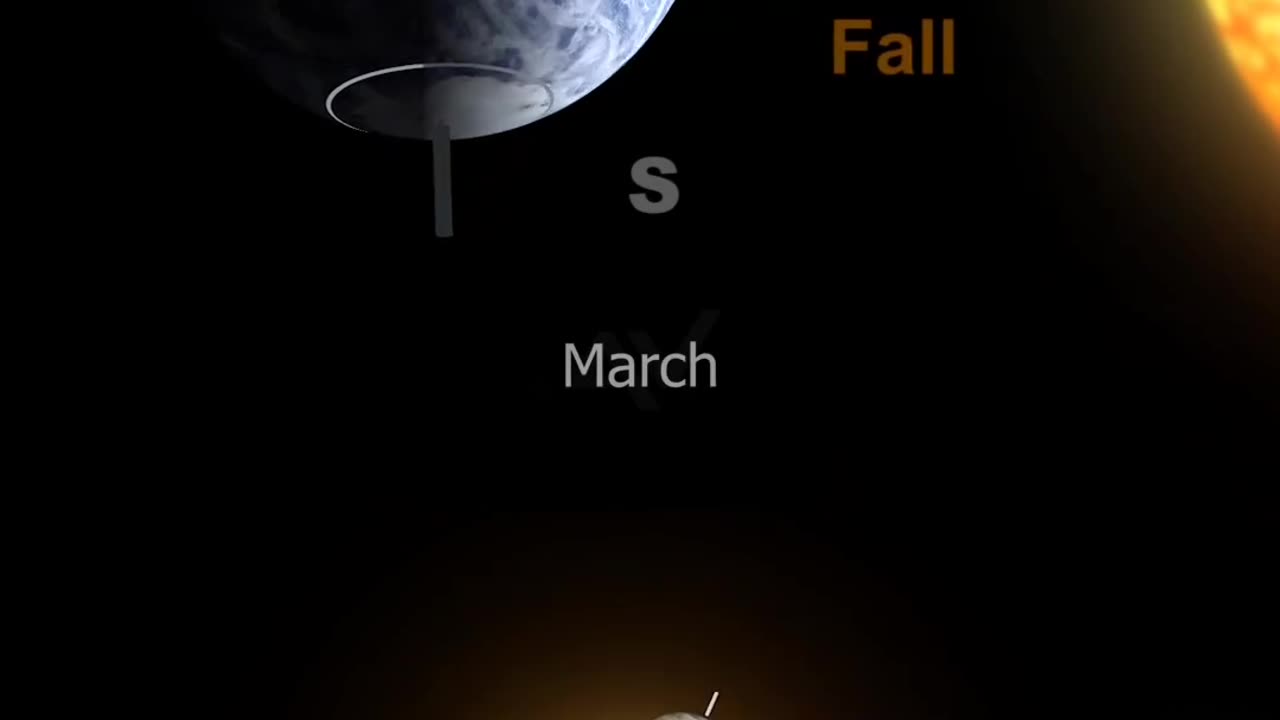Premium Only Content

How seasons change on Earth?
Seasons on Earth change due to the tilt of its axis and its orbit around the Sun. Here's how the seasons change:
1. Tilt of the Earth's Axis: The Earth is tilted on its axis by about 23.5 degrees relative to its orbit around the Sun. This tilt remains constant throughout the year. This tilt is what causes the different seasons we experience.
2. Summer Solstice: Around June 21st in the Northern Hemisphere (December 21st in the Southern Hemisphere), the North Pole is tilted towards the Sun. This results in the longest day of the year and marks the beginning of summer in the Northern Hemisphere and winter in the Southern Hemisphere.
3. Autumnal Equinox: Around September 22nd in the Northern Hemisphere (March 20th in the Southern Hemisphere), the Earth's axis is neither tilted towards nor away from the Sun. Day and night are approximately equal in duration. This marks the beginning of autumn in the Northern Hemisphere and spring in the Southern Hemisphere.
4. Winter Solstice: Around December 21st in the Northern Hemisphere (June 21st in the Southern Hemisphere), the North Pole is tilted away from the Sun. This results in the shortest day of the year and marks the beginning of winter in the Northern Hemisphere and summer in the Southern Hemisphere.
5. Vernal Equinox: Around March 20th in the Northern Hemisphere (September 22nd in the Southern Hemisphere), the Earth's axis is again neither tilted towards nor away from the Sun. Day and night are approximately equal in duration. This marks the beginning of spring in the Northern Hemisphere and autumn in the Southern Hemisphere.
As the Earth continues its orbit around the Sun, the tilt of the axis remains consistent, resulting in the cyclical changes of seasons throughout the year.
It's important to note that this explanation simplifies the concept, as factors like weather patterns, ocean currents, and geographical location can influence the specific characteristics of seasons in different regions of the Earth.
-
 LIVE
LIVE
Major League Fishing
6 days agoLIVE! - Fishing Clash Team Series: Challenge Cup - Day 5
254 watching -
 1:59:46
1:59:46
The Charlie Kirk Show
2 hours agoShould Taylor Swift Submit? + What's Wrong In Minneapolis? + MAHA vs. CDC | 8.28.2025
26K10 -
 LIVE
LIVE
StoneMountain64
42 minutes ago#1 WARZONE TACTICIAN + New Battlefield Trailer
77 watching -
 50:23
50:23
The White House
1 hour agoPress Secretary Karoline Leavitt Briefs Members of the Media, Aug. 28, 2025
3.05K15 -
 1:01:34
1:01:34
Timcast
3 hours agoCatholics Targeted By TRANS Shooter, Left Blames CHRISTIANITY
129K88 -
 2:09:57
2:09:57
Steven Crowder
4 hours agoTotal Failure: Unpacking The Media's Evil Reaction to the Minneapolis Church Shooting
284K265 -
 LIVE
LIVE
Side Scrollers Podcast
3 hours ago4Chan SUES UK Government + Craig Has Mental Illness Fatigue + Knight Rider REBOOT | Side Scrollers
317 watching -
 1:17:10
1:17:10
Sean Unpaved
2 hours agoColt Knost Unplugged: Golf, 2025 Ryder Cup, & Football Fever
12.3K -
 18:12
18:12
Neil McCoy-Ward
2 hours agoIt’s About To Get Ugly Between JD Vance and Macron
4.94K2 -
 LIVE
LIVE
Total Horse Channel
19 hours ago2025 Gypsy Congress Championship Show | Thursday
365 watching